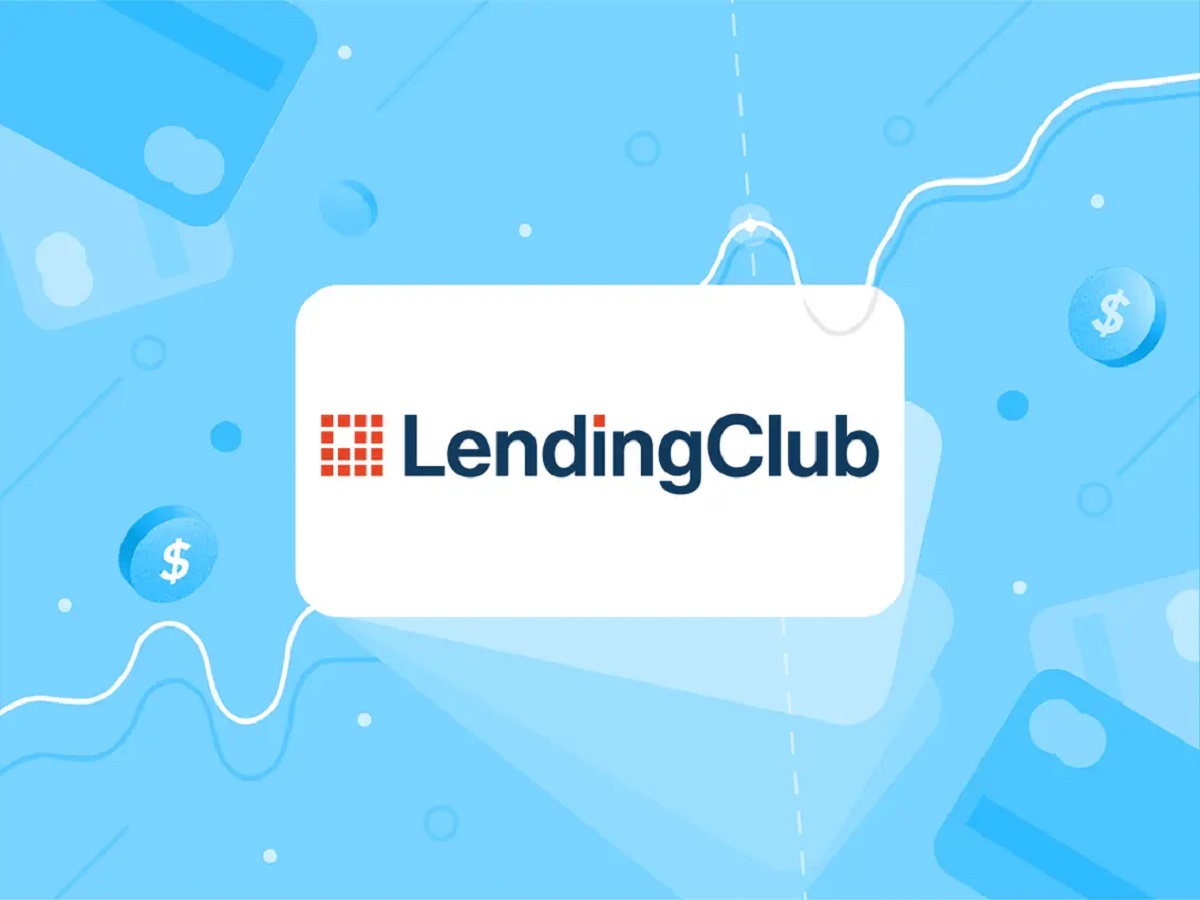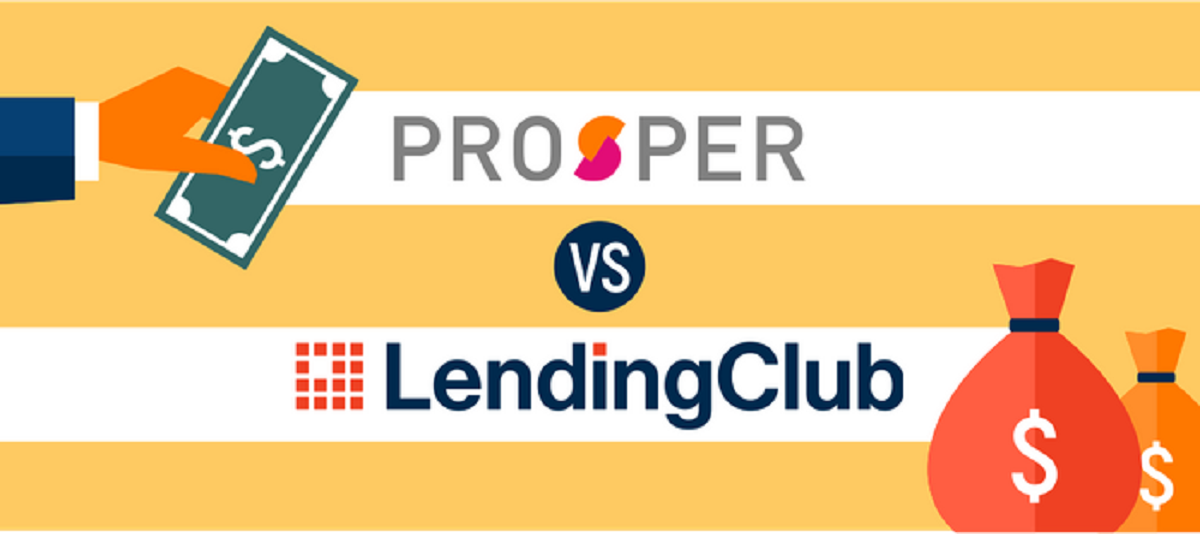Introduction
Peer-to-peer lending, also known as P2P lending, has emerged as a popular alternative to traditional banking institutions for individuals and businesses seeking loans. This innovative lending model connects borrowers directly with lenders through online platforms, bypassing the intermediaries and their associated fees.
While peer-to-peer lending has been around for over a decade, it has gained significant traction in recent years due to its convenience, ease of use, and potential for higher returns on investments. This form of lending allows individuals to access funds for various purposes, such as debt consolidation, home improvement, or even starting a new business.
One of the key advantages of peer-to-peer lending is the opportunity for borrowers to obtain loans at competitive interest rates, often lower than those offered by traditional banks. This is because P2P platforms enable lenders to diversify their investments and earn interest directly from individual borrowers, cutting out the middleman.
For lenders, P2P lending presents an attractive alternative investment option that can provide higher returns compared to traditional savings accounts or other investment vehicles. By lending to multiple borrowers across different loan types and risk levels, lenders can spread their risk and potentially earn favorable returns.
It is important to note that the peer-to-peer lending space is not without its risks. As with any financial decision, borrowers and lenders should carefully evaluate the terms and conditions of the P2P platforms they choose to work with and assess the level of risk they are comfortable with.
In this article, we will explore the factors you should consider before choosing a peer-to-peer lending platform, the different types of loans available, interest rates, fees and charges, borrower and lender criteria, security measures, and automation options. Additionally, we will compare and analyze some of the top peer-to-peer lending platforms in the market today to help you make an informed decision.
Understanding Peer-To-Peer Lending
Peer-to-peer lending, also known as P2P lending, is a form of lending that enables individuals to borrow and lend money directly without the involvement of traditional financial institutions.
At its core, P2P lending connects borrowers and lenders through online platforms, creating a marketplace where individuals can obtain loans and invest funds. These platforms act as intermediaries, facilitating the loan transactions and providing a secure environment for borrowers and lenders to connect.
When borrowers seek a loan through a P2P lending platform, they create a loan listing detailing the amount they need, the purpose of the loan, and other relevant information. Lenders, on the other hand, review these listings and decide whether to fund the loan based on factors such as the borrower’s creditworthiness and the potential return on investment.
Unlike traditional lending models where banks or financial institutions determine loan eligibility, P2P lending allows borrowers with a range of credit profiles to access funds. This opens up borrowing opportunities for individuals who may have been rejected by traditional lenders due to less-than-perfect credit.
For lenders, P2P lending offers the potential to earn higher returns compared to traditional investment options. By lending directly to borrowers, lenders can earn interest income that would typically go to the bank. Lenders can choose to diversify their investments by lending to multiple borrowers, thereby spreading their risk across a portfolio of loans.
One of the key advantages of P2P lending is the transparency and efficiency it offers. The online platforms provide borrowers and lenders with detailed information about the loan terms, interest rates, fees, and repayment schedules. This enables borrowers to make informed decisions about their loan choices and lenders to assess the risk and potential return associated with each loan listing.
It is important to note that while P2P lending offers many benefits, it also comes with risks. As a borrower, it is crucial to carefully review the terms and conditions of the loan, including the interest rate and repayment terms, before committing to a loan. Likewise, lenders should evaluate the creditworthiness of borrowers and assess the risk associated with each loan listing.
In the next sections, we will delve deeper into the factors you should consider before choosing a peer-to-peer lending platform and discuss the various types of loans available, interest rates, fees and charges, borrower and lender criteria, security measures, and automation options.
Factors to Consider Before Choosing a Peer-To-Peer Lending Platform
Before diving into the world of peer-to-peer lending, it is important to carefully evaluate the different platforms available to ensure you choose the one that best suits your needs. Consider the following factors when selecting a peer-to-peer lending platform:
- Loan Types: Peer-to-peer lending platforms offer various types of loans, ranging from personal loans to small business loans. Determine the type of loan you require and ensure the platform you choose offers the loan category that matches your needs.
- Interest Rates: Compare the interest rates offered by different platforms. Low-interest rates can help save you money in the long run, so choose a platform that offers competitive rates that align with your financial goals.
- Fees and Charges: Look into the fees and charges associated with borrowing or lending on the platform. These may include origination fees, late payment fees, or fees for early loan repayment. Understanding the fee structure will help you calculate the overall cost of borrowing or determine the potential returns as a lender.
- Repayment Terms: Evaluate the repayment terms and options provided by the platform. Some platforms offer flexible repayment schedules, while others may require fixed monthly payments. Choose a platform that aligns with your repayment preferences and financial capabilities.
- Borrower and Lender Criteria: Platforms may have specific criteria that borrowers and lenders must meet. This can include minimum credit scores for borrowers or minimum investment amounts for lenders. Ensure that you meet the platform’s criteria before signing up.
- Security and Protection Measures: Assess the security measures implemented by the platform to protect your personal and financial information. Look for platforms that use encryption and have robust identity verification processes in place to safeguard your data.
- Automation and Diversification Options: Some platforms offer automated investment options that allow lenders to diversify their investments across multiple loans automatically. This helps reduce risk and save time. Consider whether these features are important to you when choosing a platform.
By carefully evaluating these factors and assessing your personal requirements, you can choose a peer-to-peer lending platform that aligns with your goals, whether you are looking to borrow funds or invest money.
Loan Types
When exploring peer-to-peer lending platforms, it is important to consider the different types of loans they offer. Understanding the loan options available will help you choose a platform that caters to your specific borrowing or investing needs. Here are some common loan types you may come across:
- Personal loans: Personal loans are one of the most popular types of loans offered by peer-to-peer lending platforms. These loans are typically used for purposes such as debt consolidation, home improvements, or medical expenses.
- Business loans: Some platforms specialize in providing loans specifically for small businesses or startups. These loans can be used for various business-related purposes, such as purchasing equipment, expanding operations, or managing cash flow.
- Student loans: Peer-to-peer lending platforms may also offer student loans to help finance higher education expenses. These loans often come with flexible repayment options and competitive interest rates.
- Medical loans: Medical loans are designed to cover medical expenses not covered by insurance. These loans can be used for procedures, surgeries, or other healthcare-related costs.
- Home improvement loans: If you are planning to renovate or make improvements to your home, some platforms offer loans specifically tailored for these purposes. These loans can help fund remodeling projects, repairs, or upgrades.
- Debt consolidation loans: Debt consolidation loans are used to combine multiple debts into a single loan with a lower interest rate. These loans can help simplify your finances and potentially save money on interest payments.
- Automobile loans: Peer-to-peer lending platforms may also provide loans for purchasing vehicles. These loans can be used to buy new or used cars, motorcycles, or other types of vehicles.
Each loan type offers distinct features and considerations. When selecting a peer-to-peer lending platform, it is essential to find one that offers the specific type of loan you require. Consider your financial needs, the purpose of the loan, and the terms and conditions associated with each type of loan.
Additionally, pay attention to the interest rates, fees, and repayment terms associated with each loan type. This will help you assess the affordability and suitability of the loan for your financial situation.
By understanding the different loan types offered by peer-to-peer lending platforms, you can choose a platform that aligns with your borrowing or investing goals and gives you access to the specific type of loan you need.
Interest Rates
Interest rates play a crucial role in peer-to-peer lending, as they determine the cost of borrowing for borrowers and the potential returns for lenders. When evaluating peer-to-peer lending platforms, it is essential to consider the interest rates being offered. Here are some key points to consider:
Competitive Rates: Peer-to-peer lending platforms often advertise competitive interest rates compared to traditional banks. This is because these platforms operate with lower overhead costs and connect borrowers directly with lenders, eliminating the need for intermediaries.
Varying Rates: Different platforms may offer different interest rates depending on various factors such as loan type, borrower’s creditworthiness, and market conditions. It is important to compare interest rates across platforms to find the most favorable option for your borrowing or lending needs.
Fixed or Variable Rates: Some peer-to-peer lending platforms offer loans with fixed interest rates, where the rate remains the same throughout the loan term. Others may have variable rates tied to an index such as the prime rate or LIBOR. Consider your preference for fixed or variable rates when selecting a platform.
Creditworthiness Impact: Just like traditional banks, peer-to-peer lending platforms consider the borrower’s creditworthiness when determining the interest rate. Borrowers with a higher credit score and strong credit history are likely to qualify for lower interest rates. Lenders can evaluate the risk associated with each borrower and determine the interest rate they are willing to offer.
Risk-Based Pricing: Some platforms employ risk-based pricing, where the interest rate offered to borrowers depends on the assessed risk level. Higher-risk borrowers may be assigned higher interest rates to compensate for the increased risk to lenders.
Platform Fees: Consider any platform fees that may impact the overall cost of borrowing or return on investment. These could include origination fees or service fees charged by the platform. Understanding these fees will help you evaluate the true cost of the loan.
It is important to note that interest rates alone should not be the sole factor in your decision-making process. Consider other factors such as loan terms, repayment options, and the overall reputation and credibility of the peer-to-peer lending platform.
By comparing interest rates across different peer-to-peer lending platforms and understanding how rates are determined, you can make an informed decision and select a platform that offers competitive rates aligned with your financial goals.
Fees and Charges
When considering peer-to-peer lending platforms, it is crucial to take into account the fees and charges associated with borrowing or lending on the platform. These fees can impact the overall cost of borrowing or affect the returns for lenders. Here are some key points to consider:
Origination Fees: Some platforms may charge an origination fee, which is a percentage of the loan amount. This fee is deducted from the loan proceeds and is meant to cover the costs of processing the loan application. Origination fees can vary across platforms, so it is important to compare them when evaluating different options.
Service Fees: Peer-to-peer lending platforms may charge service fees to borrowers and lenders for using their platform. These fees contribute to maintaining and improving the platform’s infrastructure, customer support, and security measures. Service fees can be charged monthly, annually, or for specific services, such as late payment processing or early loan repayment.
Late Payment Fees: Borrowers who fail to make their loan payments on time may incur late payment fees. These fees are intended to incentivize timely repayments and compensate lenders for the inconvenience caused by the delay. Late payment fees vary across platforms, so it is important to understand the consequences of late payments before committing to a loan.
Prepayment Penalties: Some platforms impose prepayment penalties on borrowers who repay their loan before the agreed-upon term. These penalties are intended to compensate lenders for the interest they would have earned if the loan was repaid according to the original schedule. If you anticipate early loan repayment, it is important to inquire about any prepayment penalties associated with the platform.
Transaction Fees: In addition to loan-specific fees, some platforms charge transaction fees for transferring funds between borrowers and lenders. These fees may be a flat rate or a percentage of the transaction amount. Consider the impact of transaction fees when assessing the cost of borrowing or potential returns as a lender.
Rollover or Renewal Fees: Some platforms may offer options for loan rollover or renewal, allowing borrowers to extend the loan term. However, there may be additional fees associated with these options. If you anticipate the need to extend your loan term, it is important to understand the potential fees involved.
It is essential to carefully review the fee structure of peer-to-peer lending platforms before entering into any loan agreements. Understanding the fees and charges associated with borrowing or lending will help you assess the true cost of the loan or the potential returns on your investment.
By comparing fees across different platforms and factoring them into your decision-making process, you can choose a peer-to-peer lending platform that offers transparent and reasonable fees, ensuring a cost-effective borrowing or investing experience.
Repayment Terms
Repayment terms are an important aspect to consider when choosing a peer-to-peer lending platform. The repayment terms determine the duration and structure of the loan repayments, and it is crucial to find terms that align with your financial situation and preferences. Here are some key factors to consider:
Loan Duration: Different peer-to-peer lending platforms may offer varying loan durations. Some platforms provide short-term loans, typically lasting a few months to a year, while others offer longer-term loans that can extend over several years. Consider your financial goals and ability to make regular loan repayments when selecting the loan duration.
Repayment Frequency: Peer-to-peer lending platforms may offer different options for repayment frequency. Common options include monthly, biweekly, or weekly payments. Choose a repayment frequency that suits your budget and cash flow, ensuring you can comfortably meet the repayment obligations without financial strain.
Flexibility: Some platforms may provide flexibility in repayment terms, allowing borrowers to adjust their payments or offering grace periods in case of financial hardships. It is important to review the platform’s policy on repayment flexibility and understand any associated fees or limitations.
Early Repayment: If you anticipate the ability to repay your loan earlier than the agreed term, it is essential to consider the platform’s policy on early loan repayment. Some platforms may charge prepayment penalties, while others may have no penalties or even offer incentives for early repayment. Understanding the early repayment options can help you save on interest costs and potentially shorten the loan term.
Amortization Type: Peer-to-peer lending platforms may follow different amortization methods for calculating loan repayments. Common methods include fixed principal and interest payments, where the principal and interest components remain the same throughout the loan term, or declining balance amortization, where the interest portion decreases as the principal is repaid. Review the amortization type and calculate the total cost of the loan to assess its affordability.
Payment Methods: Consider the available payment methods for loan repayments. Most platforms offer automatic deductions from your bank account or provide options for manual payments via bank transfer. Choose a payment method that is convenient and aligns with your financial management preferences.
Understanding and evaluating the repayment terms offered by different peer-to-peer lending platforms will help you select the one that offers the most suitable terms for your financial capabilities and preferences.
By considering factors such as loan duration, repayment frequency, flexibility, early repayment options, and payment methods, you can ensure a repayment structure that fits your financial goals and enables timely loan repayments.
Borrower and Lender Criteria
Peer-to-peer lending platforms have specific criteria that borrowers and lenders must meet to participate in the lending process. These criteria determine the eligibility and suitability of individuals to borrow or invest through the platform. Here are some key considerations regarding borrower and lender criteria:
Borrower Criteria:
- Credit Score: Most peer-to-peer lending platforms assess the creditworthiness of borrowers by considering their credit scores. Higher credit scores typically indicate a lower risk profile and increase the chances of loan approval. Some platforms may have a minimum credit score requirement for borrowers, so it is important to check if your credit score meets the platform’s criteria.
- Credit History: In addition to credit scores, platforms may also evaluate a borrower’s credit history, including factors such as payment history, outstanding debts, and previous loan defaults. Lenders want to ensure that borrowers have a responsible repayment track record.
- Income and Financial Stability: Platforms may require borrowers to provide proof of income to assess their ability to repay the loan. Stable employment or a consistent source of income demonstrates financial stability and enhances the prospect of loan approval. Some platforms may specify a minimum income requirement.
- Residency and Age: Borrowers may need to meet specific residency and age requirements set by the platform. Some platforms only cater to borrowers from particular countries, while others may have age restrictions, such as requiring borrowers to be at least 18 years old.
- Verification and Documentation: Platforms typically require borrowers to go through a verification process and provide necessary documentation, such as identification documents, proof of income, and bank statements. This ensures the legitimacy of borrowers and the accuracy of the information provided.
Lender Criteria:
- Investment Amount: Lenders may need to meet a minimum investment amount requirement set by the platform. This ensures that lenders have sufficient funds to diversify their investments and mitigate risk.
- Financial Stability: Some platforms may have criteria to assess the financial stability of lenders. This can include factors such as net worth, investment experience, or income level. These criteria help ensure that lenders have the capacity to participate in the lending process.
- Risk Appetite: Lenders should consider their risk appetite and investment goals when choosing a peer-to-peer lending platform. Some platforms offer options to select the risk level of loans, allowing lenders to match their risk tolerance with appropriate lending opportunities.
- Investor Accreditation: In certain regions, peer-to-peer lending platforms may require lenders to have investor accreditation or meet specific regulatory requirements. This ensures compliance with financial regulations and protects both lenders and borrowers.
It is important to review and understand the borrower and lender criteria of each platform to ensure that you meet the requirements before initiating the borrowing or investing process. By doing so, you can ensure a smooth lending experience and increase the chances of loan approval or finding suitable investment opportunities.
Security and Protection Measures
When considering peer-to-peer lending platforms, it is crucial to assess the security and protection measures they have in place to safeguard your personal and financial information. Here are some key factors to consider:
- Encryption and Data Security: Look for platforms that use industry-standard encryption methods, such as Secure Sockets Layer (SSL) or Transport Layer Security (TLS), to ensure that your sensitive data is protected during transmission. These encryption protocols create a secure connection between your device and the platform’s servers, making it harder for unauthorized parties to intercept and access your information.
- Identity Verification: Platforms should have robust identity verification processes to ensure that borrowers and lenders are who they claim to be. This may involve verifying personal details, conducting credit checks, or requesting supporting documentation. The platform’s ability to verify user identities helps prevent fraudulent activities and protects the integrity of the lending process.
- Privacy Policies: Review the platform’s privacy policies to understand how they handle and protect your personal information. Look for platforms that are transparent about their data practices and have strict policies in place to prevent unauthorized access, use, or disclosure of your information.
- Regulatory Compliance: Peer-to-peer lending platforms should adhere to relevant financial regulations to ensure compliance and protect the interests of borrowers and lenders. Look for platforms that are registered or licensed with regulatory authorities in their operating jurisdictions. Regulatory oversight helps ensure the platform operates within legal parameters and upholds necessary standards.
- Dispute Resolution: Assess the platform’s dispute resolution mechanisms to understand how they handle conflicts or issues that may arise between borrowers and lenders. Look for platforms that have clear policies and procedures in place for resolving disputes in a fair and timely manner. Transparent and efficient dispute resolution processes enhance trust and confidence in the platform.
- Insurance or Contingency Plans: Some peer-to-peer lending platforms provide additional protection to lenders by offering insurance coverage or contingency plans in case of loan defaults. This provides an added layer of security and can mitigate the financial impact of potential borrower defaults.
Before committing to a peer-to-peer lending platform, take the time to research and evaluate their security and protection measures. Your peace of mind and the security of your personal and financial information should be a top priority. By selecting a platform with robust security measures and adhering to privacy and regulatory standards, you can engage in peer-to-peer lending with confidence.
Automation and Diversification Options
When exploring peer-to-peer lending platforms, it is important to consider the automation and diversification options they offer. These features can enhance your lending experience and potentially improve your investment outcomes. Here are some key factors to consider:
Automated Investing: Some platforms provide automated investing tools that allow lenders to automate their investment strategies. These tools use algorithms to allocate funds across multiple loans based on pre-determined criteria, such as risk tolerance and loan terms. Automated investing can save time and effort by reducing the need for manual loan selection.
Diversification: Diversification is an important risk management strategy in lending. It involves spreading your investment across multiple loans to reduce the impact of potential defaults. Look for platforms that offer diversification options, allowing lenders to invest in a variety of loan types, risk levels, and borrower profiles. Diversification can help mitigate risk and improve the overall stability of your loan portfolio.
Loan Selection Criteria: If you prefer more control over your lending activities, consider platforms that allow you to manually select loans based on your preferred criteria. This may include factors such as creditworthiness, loan purpose, and interest rates. Manual loan selection provides greater flexibility and allows you to tailor your investment strategy to your preferences.
Loan Monitoring: Platforms that offer loan monitoring tools can help lenders stay informed about the performance and status of their loans. These tools provide updates on payment history, outstanding balances, and loan repayment progress. Loan monitoring features enable lenders to track the health of their investments and take necessary actions if any issues arise.
Secondary Market: Some platforms offer a secondary market where lenders can buy and sell existing loans to other investors. This provides liquidity and flexibility, allowing lenders to adjust their loan portfolios and exit investments if needed. The secondary market can be advantageous for lenders who want to optimize their investment strategy or exit specific loans before their maturity.
Risk Analysis: Look for platforms that provide risk analysis tools or metrics to help lenders assess the potential risks associated with their investments. These tools may include credit scoring models, loan performance data, or risk assessment algorithms. These features can assist lenders in making informed investment decisions and minimizing exposure to high-risk loans.
By considering automation and diversification options, you can optimize your lending experience and potentially improve your investment outcomes. Whether you prefer automated investing tools, manual loan selection, or diversification strategies, there are platforms available that can cater to your specific preferences.
Take the time to evaluate the automation and diversification features offered by different peer-to-peer lending platforms to find the options that align with your investment goals and risk tolerance.
Comparison of Top Peer-To-Peer Lending Platforms
When choosing a peer-to-peer lending platform, it is essential to compare and analyze the features and offerings of different platforms to find the one that best suits your needs. Here is a comparison of some top peer-to-peer lending platforms:
Platform 1:
- Loan Types: Platform 1 offers a wide range of loan types, including personal loans, business loans, and student loans.
- Interest Rates: The platform offers competitive interest rates that are determined based on the borrower’s creditworthiness and loan term.
- Fees and Charges: Platform 1 charges origination fees and may have service fees. It is important to review and understand the fee structure before proceeding.
- Repayment Terms: The platform provides flexible repayment terms, allowing borrowers to choose their preferred repayment frequency.
- Borrower and Lender Criteria: Platform 1 has specific requirements for borrowers, including minimum credit scores and income levels. Lender criteria may include a minimum investment amount.
- Security and Protection Measures: The platform employs robust security measures, including encryption and identity verification, to protect user data.
- Automation and Diversification Options: Platform 1 offers automated investing tools and diversification options to help lenders optimize their investment strategies.
Platform 2:
- Loan Types: Platform 2 specializes in business loans, catering specifically to small and medium-sized enterprises.
- Interest Rates: The platform offers competitive interest rates based on the borrower’s creditworthiness and the purpose of the loan.
- Fees and Charges: Platform 2 may charge origination fees and service fees. Assess the fee structure to understand the cost implications of borrowing or lending.
- Repayment Terms: The platform provides flexible repayment options, allowing borrowers to customize their repayment schedules.
- Borrower and Lender Criteria: Platform 2 has specific criteria for businesses and lenders, including minimum revenue requirements and investment amounts.
- Security and Protection Measures: The platform prioritizes data security and employs encryption methods to protect user information.
- Automation and Diversification Options: Platform 2 offers automated investing tools and diversification options to help lenders reduce risk and optimize their investment portfolios.
Platform 3:
- Loan Types: Platform 3 focuses on personal loans for various purposes, such as debt consolidation and home improvements.
- Interest Rates: The platform offers competitive interest rates based on the borrower’s credit profile and loan term.
- Fees and Charges: Platform 3 may have origination fees and service fees. Review the fee structure to understand the overall cost of the loan.
- Repayment Terms: The platform provides flexible repayment options, allowing borrowers to choose their preferred repayment frequency.
- Borrower and Lender Criteria: Platform 3 has specific criteria for borrowers, including minimum credit scores and income requirements for loan eligibility. Lender criteria may include a minimum investment amount.
- Security and Protection Measures: The platform implements strong security measures, including encryption and identity verification, to protect user data.
- Automation and Diversification Options: Platform 3 offers automated investing tools and diversification options to help lenders manage their investment portfolios effectively.
Platform 4:
- Loan Types: Platform 4 provides a diverse range of loan types, including personal loans, business loans, and medical loans.
- Interest Rates: The platform offers competitive interest rates based on the borrower’s creditworthiness and loan purpose.
- Fees and Charges: Platform 4 may charge origination fees and service fees. Evaluate the fee structure to assess the cost implications of borrowing or lending.
- Repayment Terms: The platform offers flexible repayment terms, allowing borrowers to select their preferred repayment frequency and duration.
- Borrower and Lender Criteria: Platform 4 has specific criteria for borrowers and lenders, including minimum credit scores and income requirements.
- Security and Protection Measures: The platform prioritizes data security and employs encryption methods to protect user information.
- Automation and Diversification Options: Platform 4 offers automated investing tools and diversification options to help lenders optimize their investment strategies.
It is important to thoroughly research and compare the features, loan offerings, interest rates, fees, repayment terms, and security measures of various peer-to-peer lending platforms. Consider your specific needs, preferences, and financial goals to make an informed decision and choose the platform that best aligns with your requirements.
Platform 1
Platform 1 is a prominent peer-to-peer lending platform that offers a wide range of loan types, including personal loans, business loans, and student loans. Here are some key features and offerings provided by Platform 1:
- Loan Types: Platform 1 provides borrowers with various loan options to cater to their specific needs. Whether individuals need funds for personal expenses, business growth, or educational pursuits, Platform 1 offers a diverse portfolio of loan types to choose from.
- Interest Rates: Platform 1 offers competitive interest rates that are determined based on factors such as the borrower’s creditworthiness and the duration of the loan. Borrowers can benefit from favorable rates that align with their financial goals.
- Fees and Charges: It is important to review the fee structure of Platform 1 to understand any origination fees or service charges associated with borrowing. Evaluating the fees and charges will help borrowers assess the true cost of the loan.
- Repayment Terms: Platform 1 provides flexible repayment options, allowing borrowers to customize their repayment terms based on their financial capabilities. Whether individuals prefer monthly, biweekly, or weekly payments, Platform 1 offers repayment flexibility.
- Borrower Criteria: Platform 1 has specific criteria that borrowers must meet to be eligible for a loan. These criteria may include minimum credit scores, income verification, and other factors that help assess the borrower’s creditworthiness and ability to repay the loan.
- Security and Protection Measures: Platform 1 prioritizes the security of sensitive user data and employs robust encryption methods to protect personal and financial information. The platform also implements identity verification processes to ensure the legitimacy of borrowers and lenders.
- Automation and Diversification Options: Platform 1 offers automated investing tools and diversification options for lenders. These features enable lenders to automate their investment strategies and diversify their funds across multiple loans, reducing risk and enhancing portfolio stability.
Platform 1 is suitable for individuals or businesses seeking different types of loans, and its competitive interest rates, flexible repayment terms, and robust security measures make it an attractive choice. Borrowers can benefit from the platform’s diverse loan options, while lenders can take advantage of automation and diversification features to optimize their investment strategies.
It is important for borrowers and lenders to review the specific terms and conditions, eligibility criteria, and platform-specific policies of Platform 1 to ensure a thorough understanding of the lending process and make informed decisions about borrowing or investing.
Platform 2
Platform 2 is a leading peer-to-peer lending platform that specializes in business loans, catering specifically to small and medium-sized enterprises (SMEs). Here are some key features and offerings provided by Platform 2:
- Loan Types: Platform 2 focuses on providing business loans, helping SMEs access the funding they need for growth, expansion, or working capital requirements. Whether businesses require capital for equipment purchases, inventory management, or operational expenses, Platform 2 offers tailored loan options.
- Interest Rates: Platform 2 offers competitive interest rates on their business loans, determined based on factors such as the creditworthiness of the business and the purpose of the loan. Access to affordable interest rates can significantly benefit businesses, enabling them to repay the loan with manageable interest costs.
- Fees and Charges: It is important to review the fee structure of Platform 2 to understand if there are any origination fees or service charges associated with borrowing. Evaluating the fees and charges will help businesses assess the true cost of the loan and determine its affordability.
- Repayment Terms: Platform 2 provides businesses with flexible repayment options, allowing them to choose repayment terms that align with their cash flow and financial projections. This flexibility enables businesses to manage their finances effectively while meeting their loan repayment obligations.
- Borrower Criteria: Platform 2 has specific borrower criteria that SMEs must meet in order to qualify for a loan. These criteria may include factors such as revenue requirements, minimum time in business, and creditworthiness. Meeting these criteria enhances the chances of loan approval and accessing funds for business growth.
- Security and Protection Measures: Platform 2 prioritizes the security of sensitive business and financial information. The platform employs robust encryption methods to protect data during transmission, ensuring that confidential information is safeguarded from unauthorized access.
- Automation and Diversification Options: For lenders, Platform 2 offers automated investing tools and diversification options. These tools enable lenders to automate their investment strategies and diversify their capital across a range of business loans, reducing risk exposure and maximizing potential returns.
Platform 2 is an excellent choice for SMEs seeking business loans, with its specialized focus and competitive interest rates. The platform’s flexibility in terms of loan repayments and its emphasis on security and data protection make it a trusted option for businesses looking to secure financing. Lenders can take advantage of the automated investing and diversification features to optimize their investment portfolios and mitigate risk.
Before engaging with Platform 2, it is recommended that businesses and lenders thoroughly review the specific terms and conditions, eligibility criteria, and platform-specific policies to ensure a complete understanding of the lending process and make informed decisions about borrowing or investing.
Platform 3
Platform 3 is a well-established peer-to-peer lending platform that offers a range of loan options, primarily focusing on personal loans for various purposes. Here are some key features and offerings provided by Platform 3:
- Loan Types: Platform 3 specializes in personal loans, making it a suitable choice for individuals seeking funds for debt consolidation, home improvements, medical expenses, or other personal needs. The platform provides a diverse range of loan options to cater to different requirements.
- Interest Rates: Platform 3 offers competitive interest rates on their personal loans, taking into consideration the borrower’s credit profile and the purpose of the loan. The ability to access affordable interest rates can help individuals manage their loan repayments effectively.
- Fees and Charges: It is important to review the fee structure of Platform 3 to understand any origination fees or service charges associated with borrowing. Evaluating the fees and charges will help borrowers assess the overall cost of the loan and make informed decisions.
- Repayment Terms: Platform 3 provides borrowers with flexible repayment options, allowing them to choose repayment terms that suit their financial capabilities and preferences. The platform’s repayment flexibility ensures that individuals can manage their monthly payments comfortably.
- Borrower Criteria: Platform 3 has specific criteria that borrowers must meet in order to qualify for a personal loan. These criteria may include factors such as credit scores, income verification, and other considerations to assess the borrower’s creditworthiness and ability to repay the loan.
- Security and Protection Measures: Platform 3 places a strong emphasis on data security and employs encryption methods to safeguard the personal and financial information of borrowers. The platform also implements identity verification processes to ensure the legitimacy of borrowers and maintain the integrity of the lending process.
- Automation and Diversification Options: Platform 3 offers automated investing tools and diversification options for lenders, allowing them to automate investment strategies and diversify their funds across multiple loans. These features help lenders optimize their investment portfolios and reduce risk exposure.
Platform 3 is a reliable choice for individuals seeking personal loans, given its focus on this specific loan category and its competitive interest rates. The flexible repayment terms and robust security measures provided by the platform offer peace of mind to borrowers. Lenders can benefit from the automated investing and diversification features, allowing them to efficiently allocate their capital and achieve a well-diversified portfolio.
Prior to using Platform 3, borrowers and lenders should carefully review the specific terms and conditions, eligibility criteria, and platform-specific policies to ensure a comprehensive understanding of the lending process and make informed decisions about borrowing or investing.
Platform 4
Platform 4 is a notable peer-to-peer lending platform that offers a diverse range of loan types, including personal loans, business loans, and medical loans. Here are some key features and offerings provided by Platform 4:
- Loan Types: Platform 4 offers borrowers a wide array of loan options to meet various financial needs. Whether individuals require personal loans for debt consolidation, business loans for expansion, or medical loans for healthcare expenses, Platform 4 provides customized loan types to address specific requirements.
- Interest Rates: Platform 4 offers competitive interest rates on their loans, considering factors such as the borrower’s creditworthiness and the purpose of the loan. Access to favorable interest rates enables individuals and businesses to borrow funds at affordable terms.
- Fees and Charges: It is important to review the fee structure of Platform 4 to understand any origination fees or service charges associated with borrowing. Evaluating the fees and charges will help borrowers assess the overall cost of the loan and make informed decisions.
- Repayment Terms: Platform 4 provides flexible repayment options, allowing borrowers to select repayment terms that align with their financial situations and repayment capabilities. This flexibility enables borrowers to manage their loans effectively and make timely repayments.
- Borrower Criteria: Platform 4 has specific borrower criteria that applicants must meet to qualify for a loan. These criteria may include creditworthiness assessments, income verification, and other considerations to determine the borrower’s ability to repay the loan.
- Security and Protection Measures: Platform 4 places high importance on the security of personal and financial information. The platform implements encryption methods to protect user data and employs identity verification processes to verify the legitimacy of borrowers and maintain the integrity of the lending process.
- Automation and Diversification Options: For lenders, Platform 4 offers automated investing tools and diversification options, enabling them to automate investment strategies and diversify their capital across a range of loans. These features help lenders optimize their investment portfolios and mitigate risk.
Platform 4 is a versatile choice for individuals and businesses seeking various loan types, given its extensive selection and competitive interest rates. The flexibility in repayment terms and strong security measures provided by the platform ensure a reliable borrowing experience. Lenders can benefit from the automation and diversification features, allowing them to efficiently diversify their investments and achieve a balanced portfolio.
A thorough review of Platform 4’s specific terms and conditions, eligibility criteria, and platform-specific policies is recommended for borrowers and lenders. This will ensure a comprehensive understanding of the lending process and enable informed decision-making regarding borrowing or investing.
Conclusion
Peer-to-peer lending offers individuals and businesses an alternative way to access funds or invest capital. When choosing a peer-to-peer lending platform, it is important to consider various factors to make an informed decision. Evaluating loan types, interest rates, fees and charges, repayment terms, borrower and lender criteria, security measures, and automation and diversification options will help you select the platform that aligns with your needs and goals.
Platform 1, with its diverse loan types, competitive interest rates, and flexible repayment terms, is suitable for borrowers seeking various loan options. Platform 2, specializing in business loans, provides competitive rates and repayment flexibility for SMEs. Platform 3 focuses on personal loans, offering competitive rates and repayment flexibility for individuals’ financial needs. Platform 4 stands out with its wide range of loan types and competitive interest rates, making it a versatile choice for borrowers.
All of these platforms prioritize the security of user data, implementing encryption methods and identity verification processes. They also offer automation and diversification options for lenders, enabling them to optimize their investment portfolios and minimize risk.
Before engaging with any peer-to-peer lending platform, it is essential to review the specific terms and conditions, eligibility criteria, and platform-specific policies. This will ensure a comprehensive understanding of the lending process and help you make well-informed decisions about borrowing or investing.
Consider your financial goals, risk tolerance, and borrowing or investing needs. By carefully weighing the features and offerings of different platforms, you can choose the peer-to-peer lending platform that best matches your requirements and embark on your borrowing or investing journey with confidence.

























